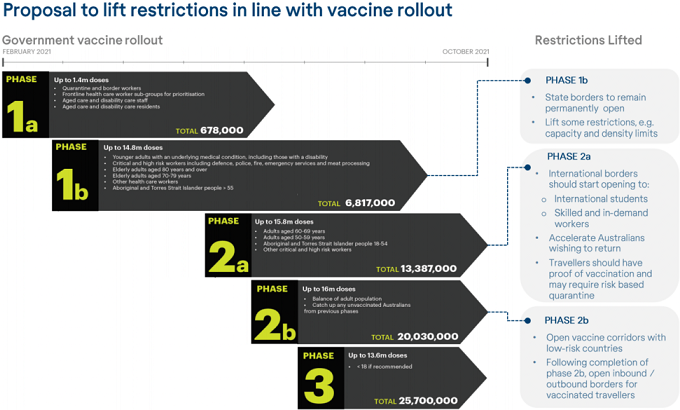 According to a report by Moodie Davitt, Sydney Airport has set out a potential roadmap for the reopening of state and international borders in Australia this year, with CEO Geoff Culbert [pictured] saying that the company is “cautiously optimistic that 2021 will see the industry begin to recover”.
According to a report by Moodie Davitt, Sydney Airport has set out a potential roadmap for the reopening of state and international borders in Australia this year, with CEO Geoff Culbert [pictured] saying that the company is “cautiously optimistic that 2021 will see the industry begin to recover”.
Sydney Airport releasing its annual results yesterday outlined a possible timeline for the reopening of domestic and international borders, in line with vaccinations, with the potential for some international travel (for vaccinated visitors) from October 2021, echoing Alan Joyce, QANTAS CEO’s projections, while the Australian government has to date been cautious on plans to reopen international borders this year.
With large scale vaccinations, Sydney Airport said that domestic state borders could permanently open when around 6.8 million Australians are vaccinated, expected around September and this would include all over 70s and the most vulnerable across all age groups.
In the next phase, said Sydney Airport, once around 13.4 million people are vaccinated, international borders should open to foreign students, skilled workers and allow overseas Australians to return, with proof of vaccination from those arriving and some risk-based quarantine possibly required. This phase could begin from October.
Once 20 million people are vaccinated, Sydney Airport proposed that Australia open travel corridors with other low-risk countries and once this phase is complete, it said that international border should open to all vaccinated travellers.
This chart above shows how Sydney Airport sees a rolling back of restrictions once mass vaccinations occur with Culbert saying, “The recovery won’t be linear, but our experience shows that when restrictions are eased and borders come down, people are keen to travel.”
Revealing its performance in 2020, Sydney Airport said that adjusted retail revenue for the full year reached A$136.9 million (US$109 million), down -63.5% year-on-year, inclusive of provisions for doubtful debts and rental abatements, with a breakdown below.
The airport said that relief discussions with business partners would continue in line with traffic recovery but that there would be no structural changes to concession contracts.
Some 41% of stores were trading in December, compared to 30% in July.
71% of contracted rents were abated from April to December, and duty free partner Heinemann gained relief in line with its contract, said the airport company.
Sydney Airport said it has “worked closely with all tenants on a case-by-case basis to provide fair and equitable temporary relief in the form of rental deferrals and abatements.
Relief ranged from 0% to 100% of the relevant rental amount. Sydney Airport believes that an equitable sharing of the pain with tenants during this challenging time will deliver the best long-term outcome.”
Passenger traffic performance 2019 and 2020, domestic and international; click to enlarge
With state borders closed, domestic recovery is lagging behind other markets, says Sydney Airport; click to enlarge
Passenger traffic fell by -74.7% year-on-year to 11.2 million. Total revenue fell by -51% to A$803.7 million (US$641 million), with EBITDA of A$627.8 million (US$501 million), down -45%. The company posted a full-year loss after tax of A$107.5 million (US$86 million), down -150% on a year earlier.
Culbert said: “The COVID-19 pandemic delivered a crisis of unprecedented magnitude to the global aviation industry, and Sydney Airport has been right on the frontline, both operationally and financially.

“We moved quickly to control the things that were in our control and put ourselves in a position to manage the unpredictability and volatility that became our ‘new normal’. The actions we took, combined with the COVID-19 vaccines rolling out, mean we have laid the foundation for our recovery through 2021 and beyond.
“Unfortunately, the severe impact of COVID-19 on passenger numbers and revenue means we are not able to pay a distribution for the 2020 year.”
An edited report from Moodie Davitt, by John Alwyn-Jones















